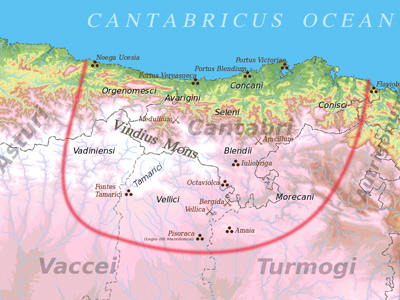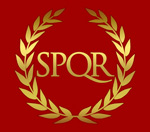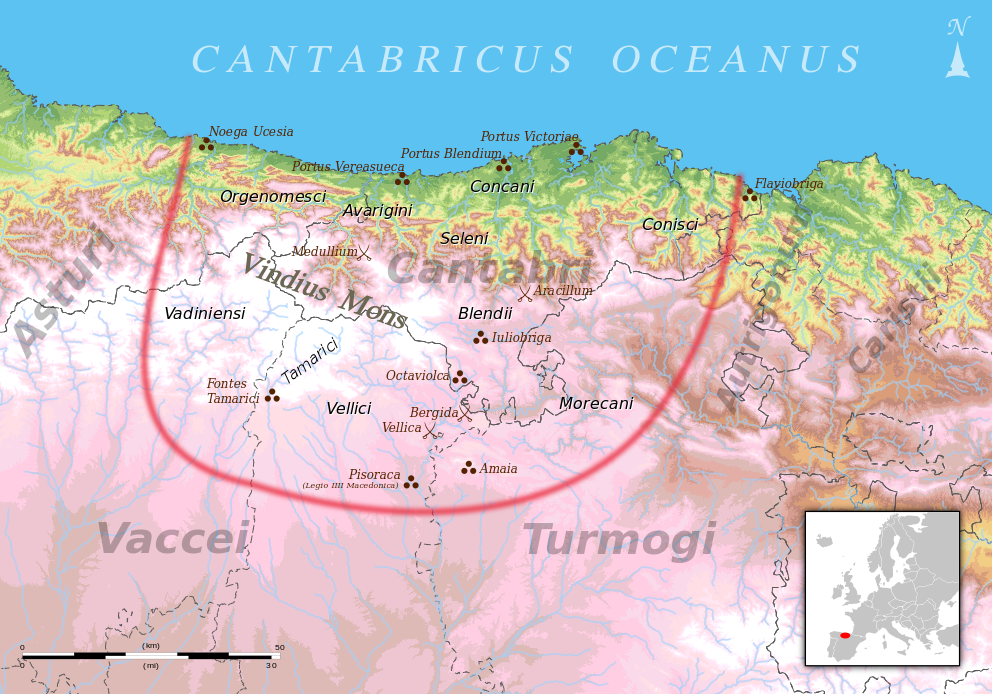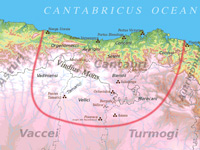Cantabrian Wars (29–19 BC)

Armies and Strategies
According to the Roman historian Dio Cassius, the tactics of the Cantabri were of guerrilla warfare, avoiding direct attacks on the Roman forces because of their inferior numbers. Their better knowledge of the difficult and mountainous terrain allowed them to conduct quick surprise strikes with ranged weapons, with ambushes followed by quick retreats, causing great damage to the Roman The Roman Empire was the post-Republican period of ancient Rome. As a polity, it included large territorial holdings around the Mediterranean Sea in Europe, North Africa, and Western Asia, and was ruled by emperors. The first two centuries of the Roman Empire saw a period of unprecedented stability and prosperity known as the Pax Romana ('Roman Peace'). The Empire was later ruled by multiple emperors who shared control over the Western Roman Empire and the Eastern Roman Empire. columns and supply lines.
The Roman Empire was the post-Republican period of ancient Rome. As a polity, it included large territorial holdings around the Mediterranean Sea in Europe, North Africa, and Western Asia, and was ruled by emperors. The first two centuries of the Roman Empire saw a period of unprecedented stability and prosperity known as the Pax Romana ('Roman Peace'). The Empire was later ruled by multiple emperors who shared control over the Western Roman Empire and the Eastern Roman Empire. columns and supply lines.
According to what remains from representations on coins and Cantabrian stelae, the Cantabri were skilled in light arms. Lucan referred to this when he wrote, Cantaber exiguis et longis Teutonus armis (The Cantabrian with his short weapons and the Teuton with his long ones). They went equipped with small swords, daggers, small spears or javelins, lances, round or oval shields of wood, and leather chest protection. They also used a weapon like the Iberian falcata, and the bipennis, a type of double-headed axe peculiar to the peoples of Northern Hispania. There is no proof of their use of archery or slings, although it is quite probable that they knew and used them.

The map shows the borders of the Roman Cantabria during the Cantabrian Wars, in relationship to today's Cantabria, along with the tribes that lived there, the neighboring peoples, towns and geographical features, according to classical sources.

The map shows the borders of the Roman Cantabria during the Cantabrian Wars, in relationship to today's Cantabria, along with the tribes that lived there, the neighboring peoples, towns and geographical features, according to classical sources.
( Click image to enlarge)
The Cantabrian were able at the time to ride horses, as reflected in the fact that some of their cavalry tactics would be adopted by the Roman army. Examples include the 'circulus cantabricus', a semicircular formation, and the 'cantabricus impetus', a massive frontal attack against enemy lines with the goal of breaching them, as described by Flavius Arrianus.
The quality of the Cantabrian enemy was such that Augustus was obliged to deploy eight legions in the conflict.
- Legio I Augusta
- II Augusta
- IIII Macedonica
- V Alaudae (operated in Asturias)
- VI Victrix (operated in Asturias)
- IX Hispana
- X Gemina (operated in Asturias)
- XX Valeria Victrix
To which he added various auxiliary troops:
- Ala II Gallorum,
- Cohors II Gallorum,
- Ala II Thracum Victrix Civium Romanorum,
- Cohors IV Thracum Aequitata,
- Ala Parthorum
- Ala Augusta
These legions with their auxiliaries added up to around 50.000 soldiers (30.000 legionaries and 20.000 auxiliaries).
The Roman navy was also sent to the Cantabrian coast from Gallia Aquitania. It was an important factor in the conflict's resolution, since it completed the encirclement of the Cantabri begun by the ground forces. It is calculated that, in total, the Roman Army deployed 70,000 men, although these calculations vary amongst authors, because they used a 5,000 men per legion base. In reality, the figure should surpass 80,000 men counting auxiliaries since, through the reforms of Gaius Marius, the legion had about 6,000 soldiers. However, in Augustus' time, although a legion was officially composed of 6,200 men, for various reasons, the number usually oscillated between 5,000 and 8,000.
HISTORY

RESOURCES
This article uses material from the Wikipedia article "Cantabrian Wars", which is released under the Creative Commons Attribution-Share-Alike License 3.0.
© Stories Preschool. All Rights Reserved.









